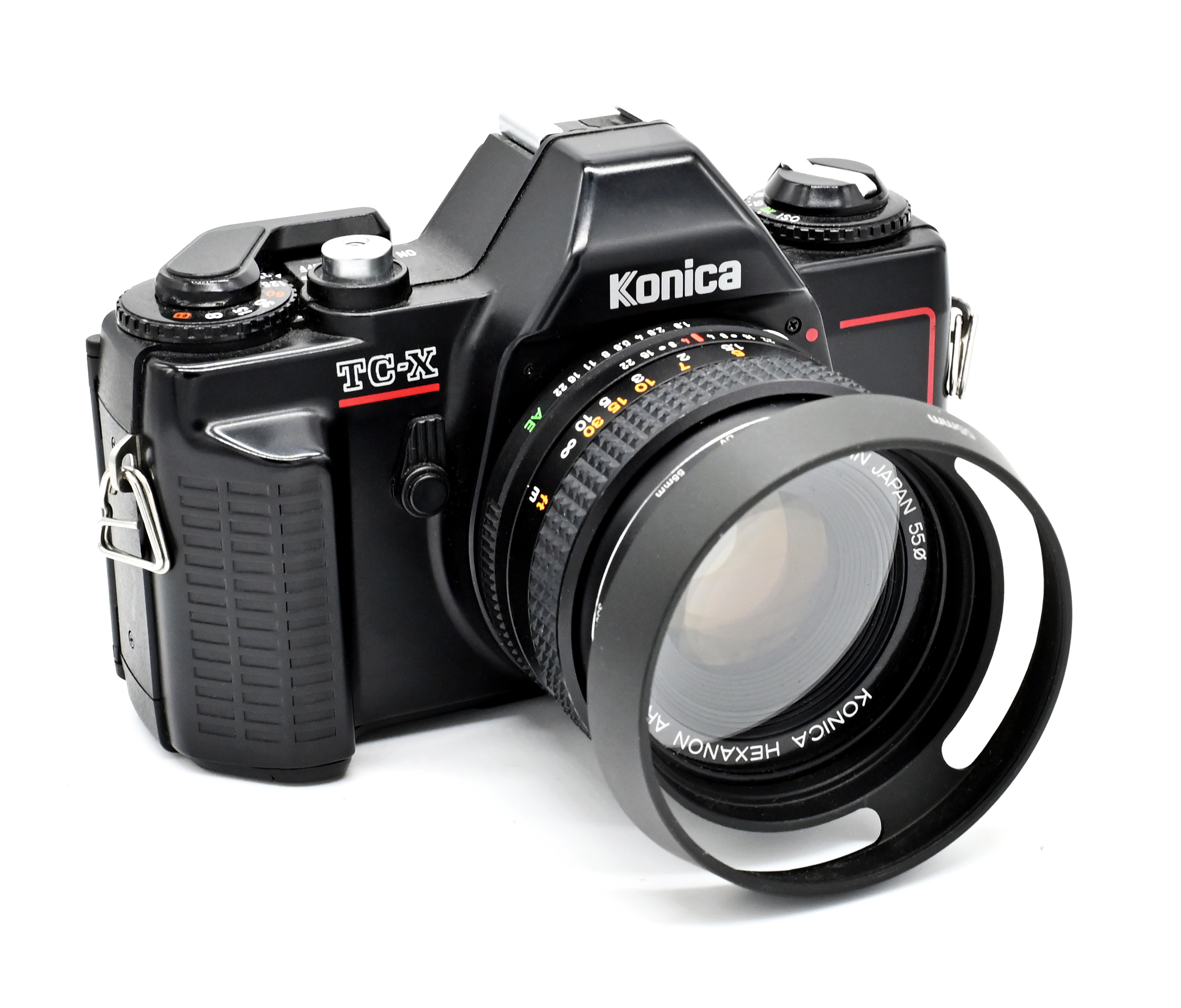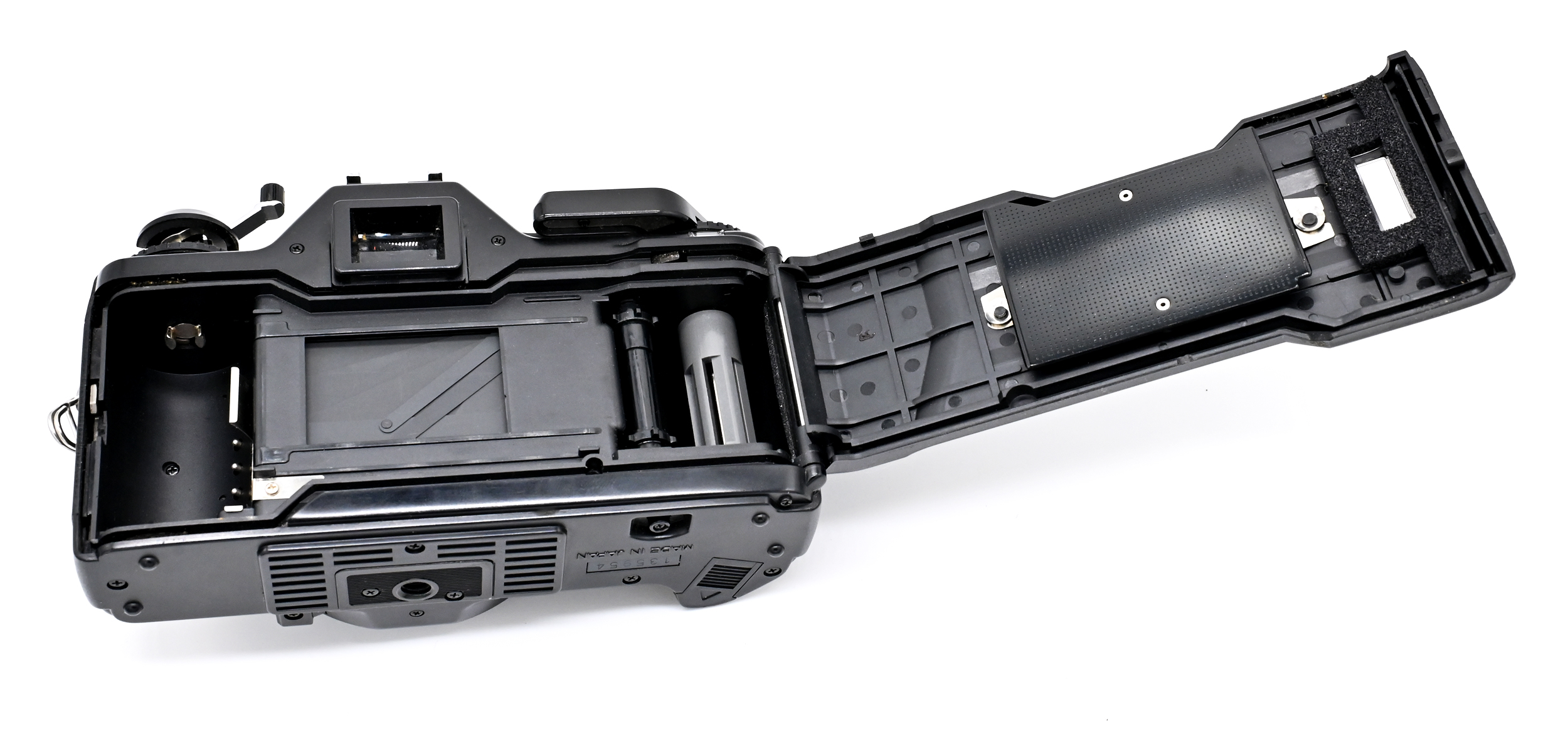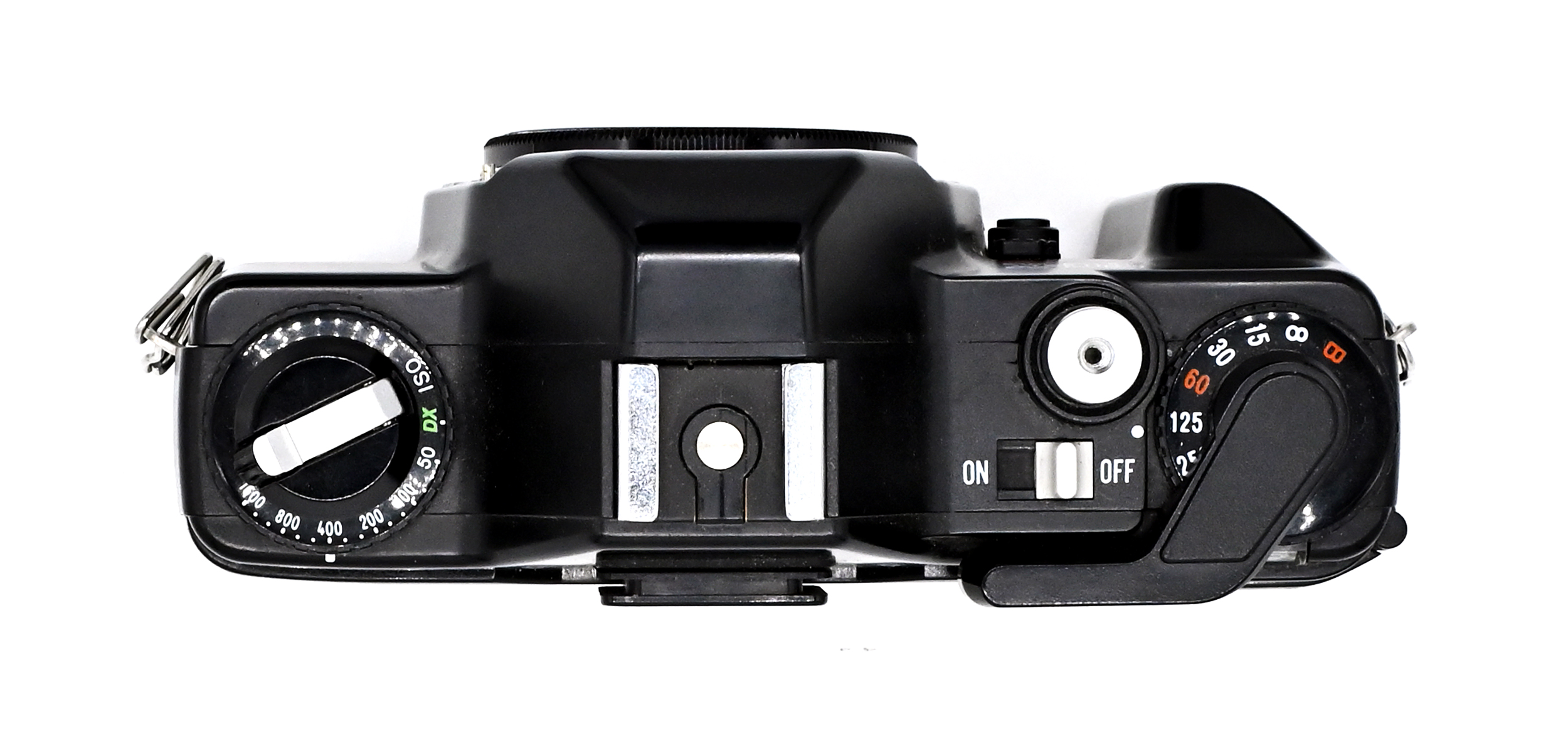
Introduced in 1985 and discontinued in 1987, the Konica TC-X was the last of the line for the Autoreflex-mount series of cameras. Supposedly built for Konica by Cosina, the TC-X shares nothing in common with any prior Konica SLR model except for the lens mount. Despite this, the TC-X was notable from an historical perspective for two aspects: (1) it was the first 35mm SLR camera capable of reading DX-coded film cassettes; and (2) it was the first body made primarily of plastic. Other than that, there is nothing remarkable about the TC-X. With its mechanical shutter and relatively dark viewfinder, and as its name implies, the TC-X is probably best understood not as any type of step forward from the 1983 electronic-shutter Konica FT-1, but rather as a kind of spiritual successor to the 1970s Autoreflex TC.
The standard lens sold with the TC-X was a new 6 element, 5 group 50mm f/1.8 Konica Hexanon lens, which was a product of a collaboration between Konica and Tokina, which produced a number of the final generation of Konica lenses, such as the f/22 versions of 21mm f/2.8, 24mm f/2.8, 35mm f/2.8, 40mm f/1.8, and a number of unremarkable zooms. The TC-X retailed for about $149 in 1985 with the 50mm lens. Sellers also often bundled the TC-X with the Tokina 35-70mm f/3.5-4.5 Zoom.
Given that, is there any case for the TC-X? Let’s take a look.


Specifications
| Lens Mount | Autoreflex |
| Shutter Type | Vertical Metal |
| Auto Exposure Mode | Shutter |
| X-Sync | 1/60 |
| Viewfinder Coverage | 92% / 0.87x |
| Meter | Center-Weighted |
| ASA Range | 50-1600 |
| Shutter Speed Range | B, 1/8 – 1/1000 |
| Exposure Lock? | Yes |
| Weight | 375g |
| Self Timer? | Yes |
| Batteries | 1 x AAA |

Operation
While functional, reliable, and relatively light, the TC-X is a very basic SLR whose design and build quality leave something to be desired. Inheriting nothing from any prior Konica body other than the lens mount, the TC-X exhibits the typical attributes of many of Cosina’s made-for-hire bodies.
Viewfinder: The TC-X has a rather dark viewfinder for this class of camera and is easily its worst attribute. The focusing screen is a standard split-screen / microprism type with the aperture settings (f/1.4-22) on the left hand of the viewfinder. Dark viewfinders mean that with lenses whose maximum apertures are f/2.8 and smaller are much more difficult to focus.
Operation: The TC-X’s shutter-speed priority autoexposure operation is straightforward. Mount an AR lens and set it to AE/EE. Turn the meter on via a switch. The viewfinder via a match needle will show what aperture is selected at the shutter speed. Fiddle with the shutter speed accordingly to arrive at the aperture you desire. The TC-X can lock the exposure by a half-press of the shutter button. The TC-X can also operate in a metered stopped-down mode. This is also very simple: set the shutter speed and aperture until the meter needle arrives at f/1.4 in the viewfinder.
Shutter: The TC-X has an abbreviated shutter speed range of 1/8 to 1/1000. The shutter is loud and undampened. The On/Off meter switch also acts as a shutter button lock.
X-Sync: The TC-X’s flash sync speed is a below-average 1/60 and must be manually set, along with the appropriate aperture, for auto flash use.
Battery: The TC-X uses a sole AAA battery which only powers the light meter. Being a mechanical-shutter camera, the TC-X will work at all shutter speeds without a battery.
DX Film Coding: As stated above, the TC-X was the first widely-available 35mm SLR that had integrated DX film reading, set on a dial around the film rewind. Fortunately, you can still manually set the film speed at anywhere from 50-1600 ASA. Film loading is actually a little bit of a pain as sometimes it is difficult to get the film leader to catch reliably into the takeup reel.

Conclusions
The good things about the TC-X are its non-battery-dependent mechanical shutter, its reliability / durability, and its useful exposure lock feature. The biggest downsides of this simple camera are its relatively dark viewfinder, its undampened shutter, and sometimes fussy film loading. While the TC-X can be seen to be a better (overall) mechanical body than the TC or the T4, my advice is go for an FT-1 and do not look back.
Pair the TC-X with the Hexanon 40mm and you’ve got the smallest and lightest mechanical SLR available with a top notch optic (and optional light meter with a modern battery).
Also in terms of price this is *very* hard to beat right now (I paid 40 pounds for TC-X+40mm in excellent condition in 2020).
“Shutter as loud as a freight train landing on a drum set at a Motorhead concert.” Best ever description of the clunky shutter sound. For me the only down side of a TC-X/40 mm combo.
Apart from that I agree on Freddy.
Just for fun:
I weighted the TC-X/40 combo at 535 g, while the Leica CL/40 was only 490 g.